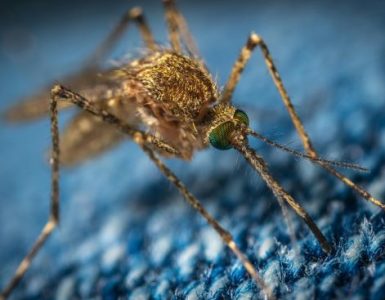The federal government and vaccine makers are getting a new COVID-19 vaccine ready for the fall. An advisory panel at the FDA last week voted on which strains of the virus to target in an updated formulation for the fall. And representatives from vaccine manufacturers Moderna, Pfizer and Novavax told the panel they can get shots in arms by September. So it’s a good time to start thinking about where you and your loved ones are at on your COVID-19 vaccines.
Here is some advice from public health experts.
Are COVID cases up?
COVID-19 cases are ticking up again after reaching a seasonal low in April. Greater Boston wastewater data show a similar trend to what we saw last summer when there was a slow climb into early fall. And, if this winter is like the last two, we can expect a short-lived spike in cases after holiday get-togethers.
Dr. Shira Doron, chief infection control officer at Tufts Medicine, says it’s still unclear to her what factors could be behind that apparent pattern.
“Why have we been seeing a spike in the winter and a summer wave? Is it the season? Is it the weather? Is it human behavior related to weather or holidays? Or is it simply variant evolution?” said Doron. “… I’m not sure we can totally predict [patterns] yet. It’s still early days of COVID in the grand scheme of things, compared to something like influenza.”
What are the new variants?
There’s been a lot of talk about what have been dubbed “FLiRT” variants, an acronym based off letter abbreviations for the virus’ mutations. All FLiRT variants are in the JN.1 family — itself a subvariant of omicron.
“The significance of [the FLiRT variants] is that they are currently the predominant variant of SARS-CoV-2, or COVID-19, that is being transmitted at the current time — over 75% of cases in the United States,” said Dr. Cassandra Pierre, associate hospital epidemiologist and medical director of public health programs at Boston Medical Center. “And there has been some concern that they may lead to an uptick of cases in the summer. But we are certainly concerned and have more confidence in saying that they probably will be contributing to an uptick in the respiratory season in the fall and winter of this year.”
Will the 2024 COVID boosters protect against FLiRT variants?
The FDA panel recommended the updated COVID vaccines target JN.1, the parent of all the FLiRT variants currently circulating. FDA adviser Dr. Melinda Wharton suggested that targeting the “trunk of the tree” would offer some protection against subvariants that may emerge.
Doron emphasizes that even though variants circulating in the fall and winter could be somewhat off-target, the updated vaccine will still offer good protection. “Whatever vaccine we give in the fall will help to protect the most vulnerable in the winter. Because … boosters boost,” Doron said. “No matter what you give, you get a boost in immunity. And it doesn’t have to match the currently circulating variants exactly for that to happen.”
When should I get a booster?
Pfizer and Moderna could be rolling out their new COVID vaccines by August. Novavax’s version might take a bit longer, since it’s based on older technology.
The Centers for Disease Control and Prevention is also expected to update its vaccine recommendations, which vary depending on age and health conditions. With the last COVID-19 booster, the CDC recommended people aged 65 years and older and people who are immunocompromised get additional doses for adequate protection.
Source: Boston University – Center on Emerging Infectious Diseases

















